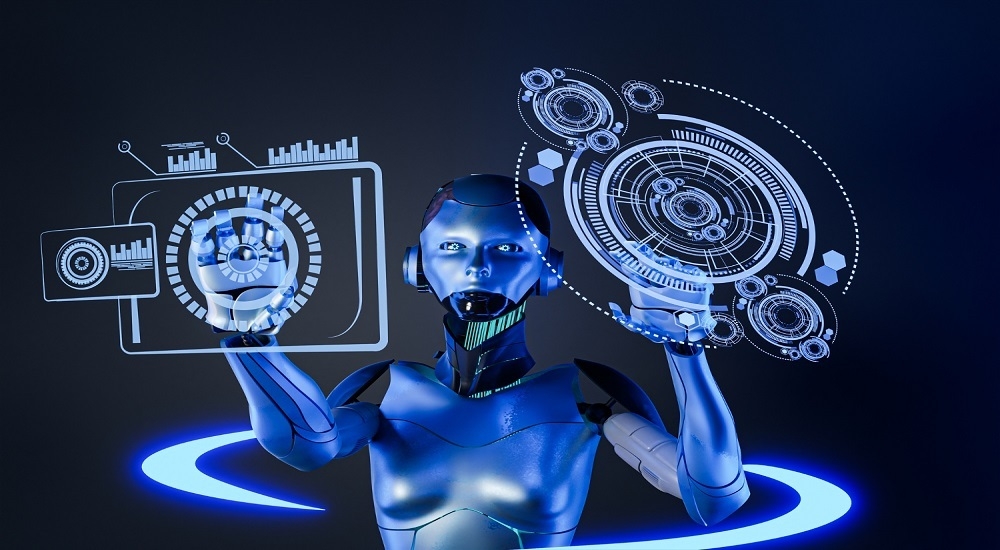Is AI-Based Demand Forecasting Changing the Game in Industries?

Introduction to AI-Based Demand Forecasting
Artificial intelligence (AI) has emerged as a transformative force across industries, and its integration into demand forecasting processes is reshaping business strategies. AI-driven forecasting represents a departure from traditional methods, offering a data-driven approach that promises greater accuracy and agility. By leveraging AI algorithms, businesses can analyze vast datasets in real-time, uncovering valuable insights into consumer behavior and market trends. This shift towards AI-based demand forecasting reflects a broader trend towards digital transformation and data-driven decision-making in the modern business landscape.
Understanding Traditional Demand Forecasting Methods
Traditional demand forecasting methods have long relied on historical data, statistical models, and human judgment. While these approaches have served as the foundation of demand planning, they often struggle to keep pace with the complexities of today's markets. Traditional methods may overlook subtle patterns and trends, leading to inaccuracies in forecasts. Moreover, manual data entry and analysis can be time-consuming and error-prone, limiting the scalability and efficiency of forecasting processes. As businesses seek to stay competitive in an increasingly dynamic environment, the limitations of traditional methods have become more apparent, driving interest in AI-driven alternatives.
Challenges Faced in Traditional Demand Forecasting
Traditional demand forecasting methods encounter several challenges that hinder their effectiveness. One significant challenge is the limited ability to adapt to changing market conditions. Traditional models may rely too heavily on historical data, failing to account for emerging trends or disruptions. Additionally, manual processes can introduce errors and delays, undermining the reliability of forecasts. Moreover, traditional methods may struggle to incorporate diverse data sources, such as social media, IoT devices, and market sentiment analysis, which can provide valuable insights into consumer behavior and preferences.
How AI is Revolutionizing Demand Forecasting
AI is revolutionizing demand forecasting by leveraging advanced algorithms and big data analytics to generate more accurate and timely predictions. Machine learning algorithms, such as neural networks and decision trees, can analyze complex datasets and identify patterns that traditional methods may overlook. Moreover, AI models can continuously learn from new data, refining their forecasts over time. By incorporating diverse data sources, including sales transactions, customer interactions, and external factors like weather patterns and economic indicators, AI-driven forecasting models can provide more nuanced and granular insights into market dynamics.
-
Machine Learning Algorithms in Demand Forecasting
Machine learning algorithms play a central role in AI-based demand forecasting, enabling businesses to extract meaningful insights from vast datasets. These algorithms can analyze historical sales data, customer demographics, and other relevant variables to generate accurate forecasts. For example, neural networks can identify nonlinear relationships between variables, while decision trees can uncover hierarchical patterns in data. By leveraging a combination of supervised and unsupervised learning techniques, AI models can adapt to changing market conditions and improve forecast accuracy over time.
-
Big Data Integration
The integration of big data is essential for AI-based demand forecasting, enabling businesses to leverage diverse data sources to enhance predictive capabilities. Big data encompasses a wide range of structured and unstructured data, including sales transactions, social media activity, website interactions, and sensor data. By aggregating and analyzing these data streams in real-time, businesses can gain deeper insights into consumer behavior, market trends, and competitive dynamics. Moreover, real-time data analysis enables businesses to respond quickly to emerging opportunities and threats, enhancing their agility and competitiveness.
Benefits of AI-Based Demand Forecasting
AI-based demand forecasting offers several benefits compared to traditional methods. One of the primary benefits is improved accuracy. By leveraging advanced algorithms and diverse data sources, AI models can generate more accurate forecasts, reducing inventory costs and minimizing stockouts. Additionally, AI-driven forecasting can enhance operational efficiency by automating manual processes and providing real-time insights. Moreover, AI models can identify patterns and trends that human analysts may overlook, enabling businesses to make more informed decisions.
Impact on Various Industries
AI-based demand forecasting has profound implications across industries, ranging from retail and manufacturing to supply chain management and beyond. In the retail sector, AI-driven forecasting enables retailers to optimize inventory levels, pricing strategies, and product assortments to meet changing consumer preferences. In manufacturing, AI-based forecasting helps companies optimize production schedules, minimize inventory holding costs, and improve resource allocation. Similarly, in supply chain management, AI-driven forecasting enables more agile and responsive supply chain operations, reducing lead times and enhancing overall efficiency.
Future Trends in AI-Based Demand Forecasting
The future of AI-based demand forecasting holds several promising trends. One such trend is the increasing adoption of advanced analytics techniques, such as predictive modeling and prescriptive analytics. These techniques enable businesses to generate more accurate and actionable insights from their data, driving better decision-making and strategic planning. Additionally, AI-powered forecasting models will become more personalized and adaptive, enabling businesses to tailor their strategies to individual customer segments and micro-markets. Moreover, as AI technologies continue to evolve, businesses will need to address ethical considerations surrounding data privacy, algorithmic bias, and transparency to ensure responsible and ethical AI deployment.
Conclusion
AI-based demand forecasting represents a significant opportunity for businesses to gain a competitive edge in today's fast-paced and complex business environment. By leveraging advanced algorithms and big data analytics, organizations can generate more accurate forecasts, improve operational efficiency, and enhance decision-making. However, realizing the full potential of AI requires addressing implementation challenges, ensuring ethical considerations, and fostering a culture of data-driven innovation. As businesses continue to embrace AI-driven forecasting, they will be better equipped to navigate uncertainty, capitalize on emerging opportunities, and drive sustainable growth in the years to come.
Predict your sales volume and demand trends with our Artificial Intelligence-based SaaS platform visit: https://thousense.ai/
- Industry
- Art
- Causes
- Crafts
- Dance
- Drinks
- Film
- Fitness
- Food
- Juegos
- Gardening
- Health
- Home
- Literature
- Music
- Networking
- Other
- Party
- Religion
- Shopping
- Sports
- Theater
- Wellness
- News


